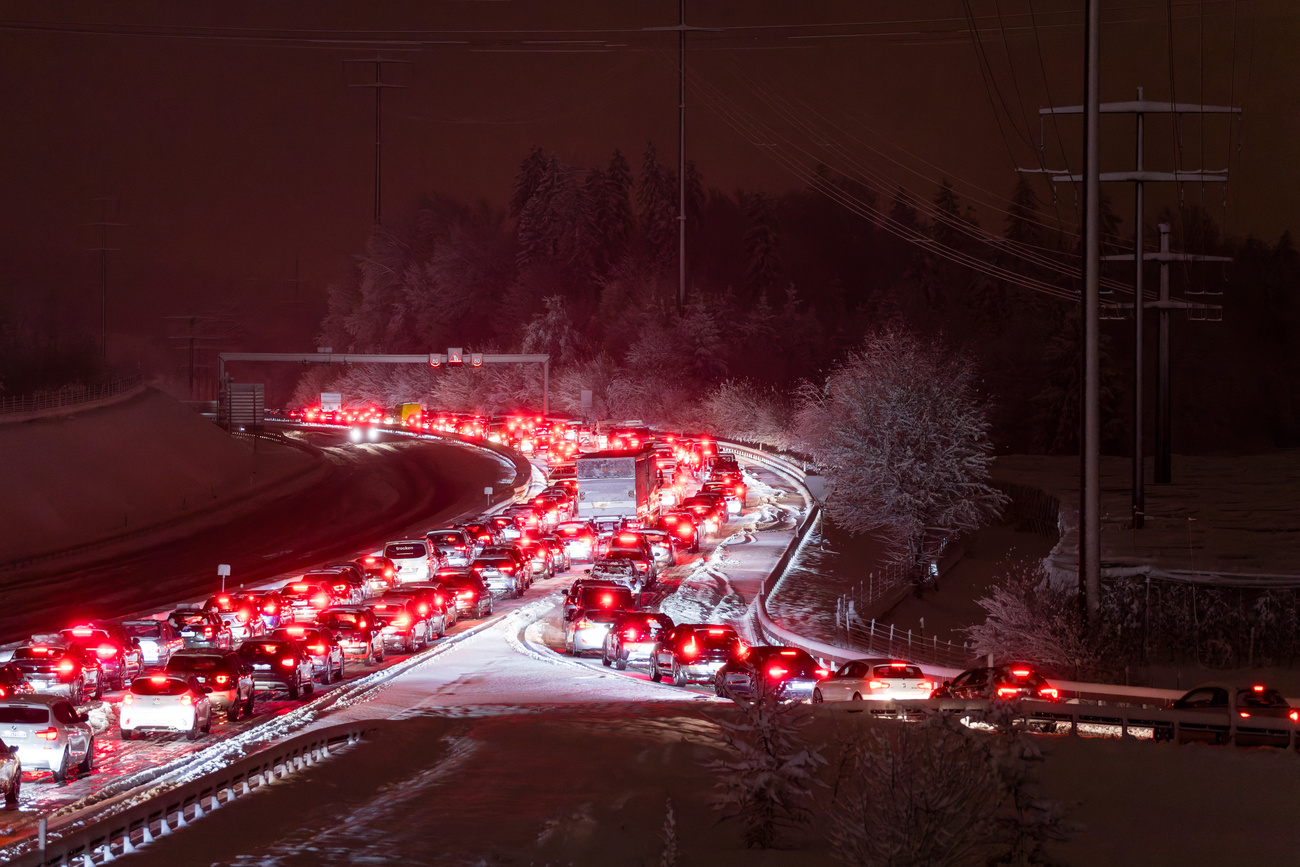Swiss pioneers’ barns honoured in US

“Switzers” – barns built by early Swiss settlers which can be found across North America – are being celebrated at a special event on Saturday.
These monuments to a vanished, rural way of life will be accessible to visitors through guided tours, both in reality and through the web, in a unique, international project.
From canton Graubünden to Tennessee in the United States, via Virginia and Ontario – and not forgetting Bird-in-Hand, in the middle of Amish country in Pennsylvania – around a dozen Swiss heritage barns will be open to the public.
“We expect thousands of visitors, in person, on Skype and via social networking sites such as Twitter and Facebook,” said Jim Scherrer, president of the Philadelphia-based Bundesbrief Society, which is organising the event.
The Bundesbrief Society, of which Scherrer is president, promotes democratic values drawn from Switzerland’s Federal Charter.
Scherrer sees in the Swiss heritage barns, “the footprint of migration for freedom and independence”.
“The people who built those barns here in the US had been persecuted in Switzerland,” Scherrer, a dual national whose paternal grandfather emigrated from St Gallen, told swissinfo.ch.
Virtual visit
Saturday’s event also mixes the old with the new, as a barn visit can also be carried out virtually via the internet.
“Usually, people like to touch a barn, to smell it and see the light playing on its walls, but using some new IT tools allows us to bring in younger people and get them to appreciate the history of Swiss roots in America,” explained Scherrer.
Although these barns are called switzers, it was popularly believed for a long time that they were German. Research by historians and barn enthusiasts has established that switzers are indeed of Swiss origin, coming from the eastern canton of Graubünden.
A typical Graubünden barn consists of a cantilever building with a top level partially suspended over the cowshed entrance. It was brought over to the US by the Amish and Mennonites, two Protestant sects fleeing persecution.
Popular style
Switzers were first built in Pennsylvania, where the Amish and Mennonites originally settled. As they spread out across Ohio, Indiana and Wisconsin, so did the barns.
“The forebay allowed for inclusion of extra storage and protected the stable walls below, the bayholes allowed for dropping hay and feed to the cows,” said Greg Huber, a rural historian and barns expert.
This style of barn was used by others as well. “It was a very utilitarian-oriented building in the American rural landscape of the 18th and 19th centuries, it was also very adaptable to later agrarian economies,” said Huber.
“Switzer barns provided greater volume and more square footage than other barns and they served Pennsylvania farmers well when they had to compete, in 1810-1835, with farmers in the Midwest who were doing a more industrial agriculture.”
Hidden history
The Museum of Appalachia in Tennessee has a barn which looks to have been inspired by the switzers, but has two side overhangs.
“This grange, dating from the 1870s, is a mystery, the same goes for the 25 or 30 other cantilevered barns that, for some unknown reason, can be seen in a tiny area of Southern Appalachia, that’s about three counties in Eastern Tennessee,” John Rice Irwin, the museum’s founder, told swissinfo.ch.
Both he and Huber say that a definitive history of Swiss heritage barns has yet to be written.
“People at the time were so occupied to survive, working 12 hours a day, six days a week, and nobody was walking around making historical notes,” observed Irwin.
Cult objects
Nowadays the barns are almost cult objects in the US – a result of movements to go back to the land in the 1960s and to preserve the country’s heritage. There are now a myriad local associations as well as a National Barn Alliance.
The Swiss heritage barn open day also includes the creation of an International Barn Alliance.
“I have no idea what the people who made my computer are about, but looking at barns, one can read the history of the people who built them,” said Huber.
“The barns have a spiritual aspect to me, they hold lots of secrets within their forms and materials, they have a spiritual space and grounding,” he added.
“The spiritual aspect also conveys to me a consciousness that these people surrounded themselves with nature and lived their lives dictated by the rules of nature when we, now, are so removed from nature.”
Marie-Christine Bonzom in Washington, swissinfo.ch (Translated from French by Isobel Leybold-Johnson)
Nine traditional Swiss-style barns in the US and Canada are participating in the open day on August 7.
They date from the 18th and 19th centuries and some have been classified as historical monuments.
Pennsylvania alone counts between 1,000 and 1,200 Swiss heritage barns, the oldest dating from 1770.
Two Swiss sites are joining in the celebrations: the Ballenberg Open Air Museum in canton Bern and the Nutli Hüschi Museum in Klosters, in canton Graubünden.
People visiting the sites in person can also take part in a simultaneous virtual visit of other barns or in a forum on the origins, development and cultural important of switzers with historians and architects, through Skype.
To follow the event at home, click on the first link in the links section and choose a site. Then click on the barn’s site.

In compliance with the JTI standards
More: SWI swissinfo.ch certified by the Journalism Trust Initiative












You can find an overview of ongoing debates with our journalists here . Please join us!
If you want to start a conversation about a topic raised in this article or want to report factual errors, email us at english@swissinfo.ch.